Our Aim
To provide you with an overview on New And existing technologies, hopefully helping you understand the changes in the technology. Together with the overviews we hope to bring topical issues to light from a series of independent reviewers saving you the time And hassle of fact finding over the web.
We will over time provide you with quality content which you can browse and subscribe to at your leisure.
TekSpek 's

AMD Radeon RX5700 XT and RX5700
Date issued:
New Age of Radeon
Productised as the Radeon RX 5700 XT and Radeon RX 5700, the new duo target the mid-to-high-end segment and are primed for high-quality gaming at a lush 1440p resolution.
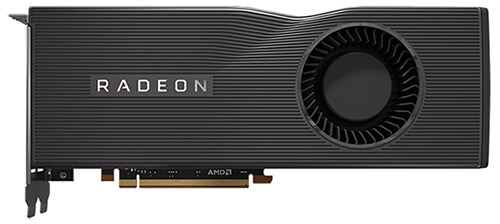
The more powerful of the two cards, the RX 5700 XT, carries a $399 MSRP and is initially available in reference form with custom partner cards expected in the coming weeks. AMD's reference cooler looks familiar, with a single-fan arrangement that's reminiscent of previous-generation Vega, but this time around there's the promise of a seven-phase VRM, graphite-based thermal interface material and an improved acoustic profile.
It also happens to be one of the more handsome AMD boards of recent years, featuring a matte-grey aluminium shroud, a full-size backplate and a backlit Radeon logo. Not to mention the "power contour" that curiously shapes the top of the card. On the inside, the XT model touts 2,560 stream processors, 160 texture units, 64 ROPs and a 256-bit bus leading to an 8GB GDDR6 frame buffer.
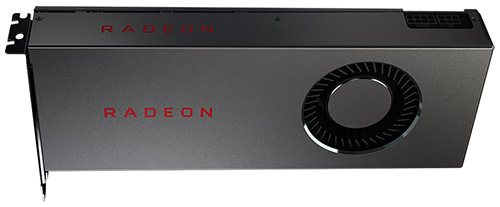
Next up, the Radeon RX 5700, launched at $349, takes a plainer approach to design and loses four of the XT's 40 cluster units, dialling the number of shader processors and texture units down to 2,304 and 144, respectively. At the back-end, the number of ROPs, the memory bus and the size of the frame buffer remains untouched, leaving RX 5700 suitably adept at handling high-resolution workloads.
A Modern Architecture
Let's break out the full specification table to see how the RDNA GPUs compare:
Radeon evolution: from Vega to Navi |
|||||
|---|---|---|---|---|---|
| Radeon RX 5700 XT | Radeon RX 5700 | Radeon VII | Radeon RX Vega 64 | Radeon RX Vega 56 | |
| Launch date | July 2019 | July 2019 | February 2019 | August 2017 | August 2017 |
| Codename | Navi 10 | Navi 10 | Vega 20 | Vega 10 | Vega 10 |
| Architecture | RDNA | RDNA | GCN | GCN | GCN |
| Process (nm) | 7 | 7 | 7 | 14 | 14 |
| Transistors (bn) | 10.3 | 10.3 | 13.2 | 12.5 | 12.5 |
| Approx Die Size (mm²) | 251 | 251 | 331 | 486 | 486 |
| Full Implementation of Die | Yes | No | No | Yes | No |
| Processors | 2,560 | 2,304 | 3,840 | 4,096 | 3,584 |
| Texture Units | 160 | 144 | 240 | 256 | 224 |
| ROP Units | 64 | 64 | 64 | 64 | 64 |
| Boost Clock (MHz) | 1,905 | 1,725 | 1,800 | 1,546 | 1,471 |
| Game Clock (MHz) | 1,755 | 1,625 | - | - | - |
| Peak GFLOPS (SP) | 9,750 | 7,950 | 13,824 | 12,665 | 10,544 |
| Memory Type | GDDR6 | GDDR6 | HBM2 | HBM2 | HBM2 |
| Memory Size (GB) | 8 | 8 | 16 | 8 | 8 |
| Memory Clock (MHz) | 14,000 | 14,000 | 1,000 | 945 | 800 |
| Memory Bus (bits) | 256 | 256 | 4,096 | 2,048 | 2,048 |
| Max Bandwidth (GB/s) | 448 | 448 | 1,024 | 484 | 410 |
| PCIe Support | Gen 4 | Gen 4 | Gen 3 | Gen 3 | Gen 3 |
| Power Connectors | 6+8 | 6+8 | 8+8 | 8+8 | 8+8 |
| TDP (watts) | 225 | 180 | 300 | 295 | 210 |
| GFLOPS per watt | 43.3 | 44.2 | 46.1 | 42.9 | 50.2 |
| Launch MSRP | $399 | $349 | $699 | $499 | $399 |
At first glance, the on-paper numbers may appear underwhelming. It won't have escaped your attention that the Radeon RX 5700 XT has fewer stream processors than either the Radeon VII, Radeon RX Vega 64 or indeed the Radeon RX Vega 56. But remember that the Radeon RX 5000 Series can be viewed as a clean break from what has come before, as it ushers in a new RDNA architecture, codenamed Navi.
Geared toward doing more with less, Navi is all about increasing efficiency in order to make Radeons competitive once again. Behind the scenes, each Navi CU comes equipped with both a second scalar unit and a second scheduler to offer double the instruction rate as on previous generations, making the new design far better suited to gaming workloads.
Fine-tuning the nuts and bolts, Navi benefits from dual SIMD32 instructions with a single-clock issue, rather than a four-clock SIMD16, again making the GPU better adept at handling typical gaming code. These core enhancements are bolstered by the addition of dedicated L1 cache and more on-chip bandwidth, resulting in improved cache latency. Add to that improved colour compression algorithms, as well as the ability to directly read compressed data from the memory subsystem, and it's clear to see why Navi is a significant step forward.
Architecture enhancements are all well and good, but of course there's nothing like a smaller fabrication process to help speed things along. Employing a cutting-edge 7nm fab from TSMC, the first Navi die measures just 251mm² and incorporates a whopping 10.3-billion transistors. Making full use of the die shrink, AMD has also been able to heighten shipping frequencies, with Game Clock speeds of 1,755MHz and 1,625MHz for the RX 5700 XT and RX 5700, respectively. Though the GPUs can technically scale higher, these are the average frequencies AMD expects users to witness during gameplay.
A 6+8-pin power requirement further reinforces the fact that these are newer, more efficient Radeons, and this is reflected in 225W and 180W TDPs; considerably lower than the 295W RX Vega 64. AMD has clearly aimed for a leaner overall design - there's no expensive-to-produce HBM memory and no dedicated ray-tracing hardware - but Navi does have one eye on the future by including support for PCIe Gen 4.
QHD Gaming Credentials
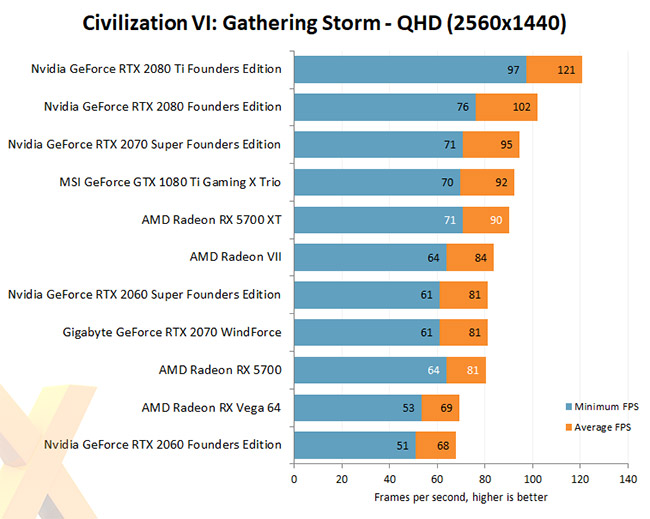
Benchmarks from leading review sites show that Radeon RX 5700 Series is capable of much more than just 1080p gaming. Stepping-up to 1440p is well within the remit of these GPUs, with the RX 5700 XT showing a performance gain of over 30 per cent when compared to its direct predecessor, the RX Vega 64.
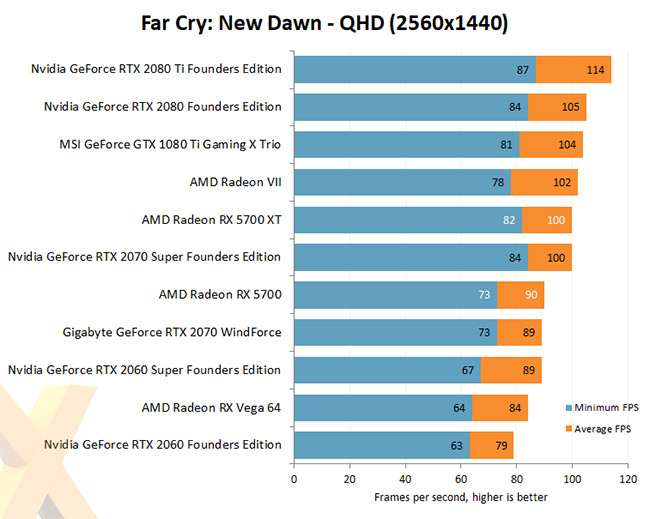
In some games, RX 5700 XT goes toe-to-toe with the rival GeForce RTX 2070 Super, while the RX 5700 proves to be a match for the RTX 2060 Super. It's worth noting that the GeForce options include dedicated ray-tracing hardware, yet on the other hand, the Radeons offer support for PCIe Gen 4 and are cheaper to boot.
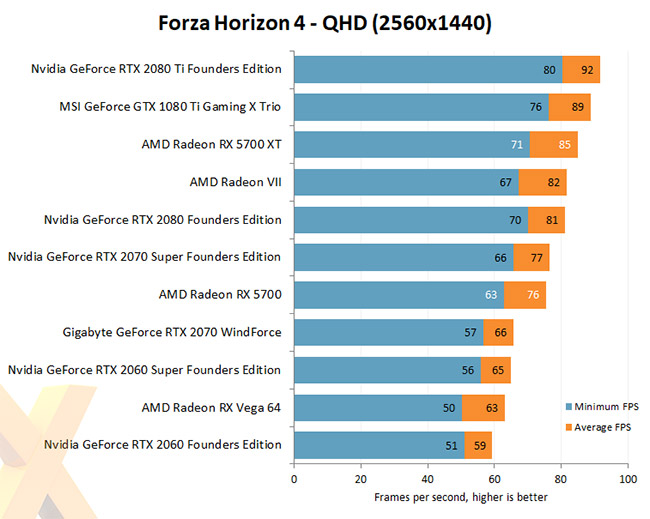
As is often the case, there are certain titles that perfectly showcase a new graphics architecture. For Navi, that title is Forza Horizon 4: the game looks terrific and plays silky smooth on AMD's latest hardware.
Summary
There's no doubt about it, the RX 5700 XT and RX 5700 are the best Radeons that AMD has produced in quite some time. Taking a sensible approach with first-generation Navi, the graphics giant has shied away from experimental technologies such as ray tracing to focus on what matters to most gamers; smooth, high-resolution gameplay from a lean, efficient GPU.
That, in a nutshell, is exactly what the first Navi GPUs deliver, and at their respective $399 and $349 price points, the RX 5700 XT and RX 5700 are at the very least going to serve as a noteworthy alternative to GeForce RTX cards that have dominated up until now.